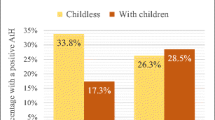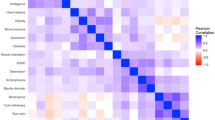Abstract
The biological and social transmission of attitudes toward abortion and gay rights are analyzed in a large sample of adult twins, siblings, and their parents. We present a linear model for family resemblance allowing for both genetic and cultural transmission of attitudes from parents to offspring, as well as phenotypic assortative mating (the tendency to marry like) and other environmental sources of twin and sibling resemblance that do not depend on the attitudes of their parents. The model gives a close fit to the patterns of similarity between relatives for the two items. Results are consistent with a substantial role of genetic liability in the transmission of both attitudes. Contrary to the dominant paradigm of the social and political sciences, the kinship data are consistent with a relatively minor non-genetic impact of parental attitudes on the development of adult attitudes in their children. By contrast, the choice of mate is a social action that has a marked impact on the polarization of social attitudes and on the long-term influence that parents exert upon the next generation.

Similar content being viewed by others
References
Abramowitz A (1995) It’s abortion, stupid, policy voting in the 1992 Presidential election. J Polit 57:176–186
Alford J, Funk C, Hibbing J (2005) Are political orientations genetically transmitted? Am Polit Sci Rev 99:153–167
Bouchard T, Lykken D, McGue M, Segal N, Tellegen A (1990) Sources of human psychological differences, the Minnesota study of twins reared apart. Science 250:223–228
Buss D, Barnes M (1986) Preferences in human mate selection. J Pers Soc Psychol 50:559–70
Campbell A, Converse P, Miller W, Stokes D (1960) The American voter. New York: Wiley
Carmines E, Stimson J (1980) The two faces of issue voting. Am Polit Sci Rev 74:78–91
Cattell R (1965) Methodological and conceptual advances in evaluating hereditary and environmental influences and their interaction. In: Vandenberg SG (ed) Methods and goals in human behavior genetics. Academic Press, New York
Cavalli-Sforza L, Feldman M (1981) Cultural transmission and evolution: a quantitative approach. Princeton University Press, Princeton, NJ
Cloninger R, Rice J, Reich T (1979) Multifactorial inheritance with cultural transmission and assortative mating II. A general model of combined polygenic and cultural inheritance. Am J Human Genet 31:176–198
Duncan O (1966) Path analysis, sociological examples. Am J Sociol 72:1–16
Eaves LJ (1979) The use of twins in the analysis of assortative mating. Heredity 43:399–409
Eaves LJ (1982) The utility of twins. In Anderson VE, Hauser WA, Penry JK, Sing CF (eds) Genetic basis of the epilepsies. Raven Press, New York, pp 249–276
Eaves LJ, Eysenck HJ (1974) Genetics and the development of social attitudes. Nature 249:288–289
Eaves LJ, Eysenck HJ, Martin NG (1989) Genes, culture and personality, an empirical approach. Academic Press, New York
Eaves LJ, Martin NG, Heath AC, Schieken RM, Meyer J, Silberg JL Neale MC, Corey LA (1997) Age changes in the causes of individual differences in conservatism. Behav Genet 27:121–4
Eaves LJ, Heath AC, Martin NG, Maes HH, Neale MC, Kendler KS, Kirk KM, Corey LA (1999) Comparing the biological and cultural inheritance of personality and social attitudes in the Virginia 30 000 study of twins and their relatives. Twin Res 2:62–80
Eaves LJ, Silberg JL, Erkanli A (2003) Resolving multiple epigenetic pathways to adolescent depression. J Child Psych 44:1006–1014
Fisher R (1918) The correlation between relatives on the supposition of Mendelian inheritance. Trans R Soc Edinborough 52: 399–433
Galton F (1883) Inquiries into human faculty and its development. Macmillan, London
Hatemi PK, Alford JR, Hibbing JR, Keller MC, Martin NG, Medland SE, Eaves LJ (2007) Politics and genetics. American Political Science Association Conference, September, Chicago IL
Heath AC, Eaves LJ (1985) Resolving the effects of phenotype and social background on mate selection. Behav Genet 15:45–90
Heath AC, Kendler KS, Eaves LJ, Markell D (1985) The resolution of cultural and biological inheritance, Informativeness of different relationships. Behav Genet 15:439–465
Heath AC, Eaves LJ, Nance WE, Corey LA (1987) Social inequality and assortative mating, Cause or consequence? Behav Genet 17:9–17
Hewitt JK, Eysenck HJ, Eaves LJ (1977) Structure of social attitudes after twenty-five years, A replication. Psychol Rep 40:183–188
Jelen T, Wilcox C (2003) Causes and consequences of public attitudes toward abortion, a review and research agenda. Polit Res Quart 56:489–500
Jencks C, Smith M, Acland H, Bane MJ, Cohen D, Gintis H, Heyns B, Michelson S (1972) Inequality, a reassessment of the effect of family and schooling in America. Basic Books, New York
Johannsen W (1911) The genotype conception of heredity. Am Nat 45:129–159
Kalmijn M (1994) Assortative mating by cultural and economic occupational status. Am J Sociol 100:422–437
Kalmijn M, Flap H (2001) Assortative meeting and mating, unintended consequences of organized settings for partner choices. Social Forces 79:1289–1312
Kendler KS, Gardner C (1998) Twin studies of adult psychiatric and substance dependence disorders, are they biased by differences in the environmental experiences of monozygotic and dizygotic twins in childhood and adolescence. Psychol Med 28:625–633
Klein DS (1999) What happened in Laramie. Ann Intern Med 130(3):235–236
Legge J (1983) The determinants of attitudes toward abortion in the American Electorate. West Polit Quart 36:479–490
Lykken D, McGue M, Bouchard T, Tellegen A (1990) Does contact lead to similarity or similarity to contact? Behav Genet 20:547–561
Maes HH, Neale MC, Eaves LJ (1997) Genetic and environmental factors in relative body weight and human adiposity. Behav Genet 27:325–351
Mare R (1991) Five decades of educational assortative mating. Am Sociol Rev 56:15–32
Martin NG, Eaves LJ, Heath AC, Jardine R, Feingold LM, Eysenck HJ (1986) The transmission of social attitudes. Proc Natl Acad Sci USA 83:4364–4368
McGue M, Wette R, Rao DC (1984) Evaluation of path analysis through computer simulation: effect of incorrectly assuming independent distribution of familial correlations. Genet Epidemiol 1:255–69
Meckler L, Bauerlein V (2007) Huckabee taps renewed fervor of evangelicals. The Wall Street J. http://online.wsj.com/article/SB119785680206032939.html
Merikangas K (1984) Divorce and assortative mating among depressed patients. Am J Psych 141:74–76
Morton N (1974) Analysis of family resemblance. I. Introduction. Am J Human Genet 26:318–30
Neale MC, Boker SM, Xie G, Maes HH (2002) Mx, Statistical modeling, 6th edn. Department of Psychiatry, Virginia Commonwealth University, Richmond, VA
Page B, Jones C (1979) Reciprocal effects of policy preferences, party loyalties and the vote. Am Polit Sci Rev 73:1071–1090
Pearson K (1903) On the inheritance of the mental and moral characters in man, and its comparison with the inheritance of the physical characters. J R Anthropol Inst GB Irel 33:179–237
Pearson K (1904) On a generalized theory of alternative inheritance, with special references to Mendel’s laws. Philos Trans R Soc Lond 203:53–86
Rao DC, Morton NE, Cloninger CR (1979) Path analysis under generalized assortative mating. I. Theory. Genet Res 33:175–188
Scarr S, McCartney K (1983) How people make their own environment, a theory of genotype-environmental effects. Child Develop 54:424–435
Silberg J, Rutter M (2001) Nature-nurture interplay in the risks associated with parental mental disorder. In: Goodman S (ed) Children of depressed parents, alternative pathways to risk for psychopathology. John Wiley and Sons
Stoker L, Jennings M (1995) Life-cycle transitions and political participation, the case of marriage. Am Polit Sci Rev 89:421–433
Tesser A (1993) The importance of heritability in psychological research, The case of attitudes. Psychol Rev 100:129–142
Truett KR, Eaves LJ, Walters EE, Heath AC, Hewitt JK, Meyer JM, Silberg J, Neale MC, Martin NG, Kendler KS (1994) A model system for the analysis of family resemblance in extended kinships of twins. Behav Genet 24:35–49
Vandenberg S (1972) Assortative mating, or who marries whom? Behav Genet 2:127–157
Wilcox C, Norrander B (2002) Of mood and morals, the dynamics of opinion on abortion and gay rights. In: Norrander B, Wilcox C (eds) Understanding public opinion. CQ Press, Washington, DC
Wilson G, Patterson J (1968) A new measure of conservatism. Br J Soc Clin Psychol 7:264–269
Wright S (1921) Correlation and causation. J Agric Res 20:557–585
Zaller JR (1992) The nature and origins of mass opinion. Cambridge University Press, Cambridge
Acknowledgments
Data collection was conducted by Lindon Eaves, Nicholas Martin, Andrew Heath and Kenneth Kendler supported by grants AA-06781 and MH-40828 from the National Institutes of Health and a gift from RJR Nabisco. PKH is supported by MH-20030-09. We thank Hermine Maes for assistance with data management and Michael Neale for access to the Mx program for structural modeling. Model development and data analysis were supported by MH-068521. We thank Greg Carey for his careful and insightful reading of an earlier draft of this article.
Author information
Authors and Affiliations
Corresponding author
Additional information
Edited by John K Hewitt.
Rights and permissions
About this article
Cite this article
Eaves, L.J., Hatemi, P.K. Transmission of Attitudes Toward Abortion and Gay Rights: Effects of Genes, Social Learning and Mate Selection. Behav Genet 38, 247–256 (2008). https://doi.org/10.1007/s10519-008-9205-4
Received:
Accepted:
Published:
Issue Date:
DOI: https://doi.org/10.1007/s10519-008-9205-4




